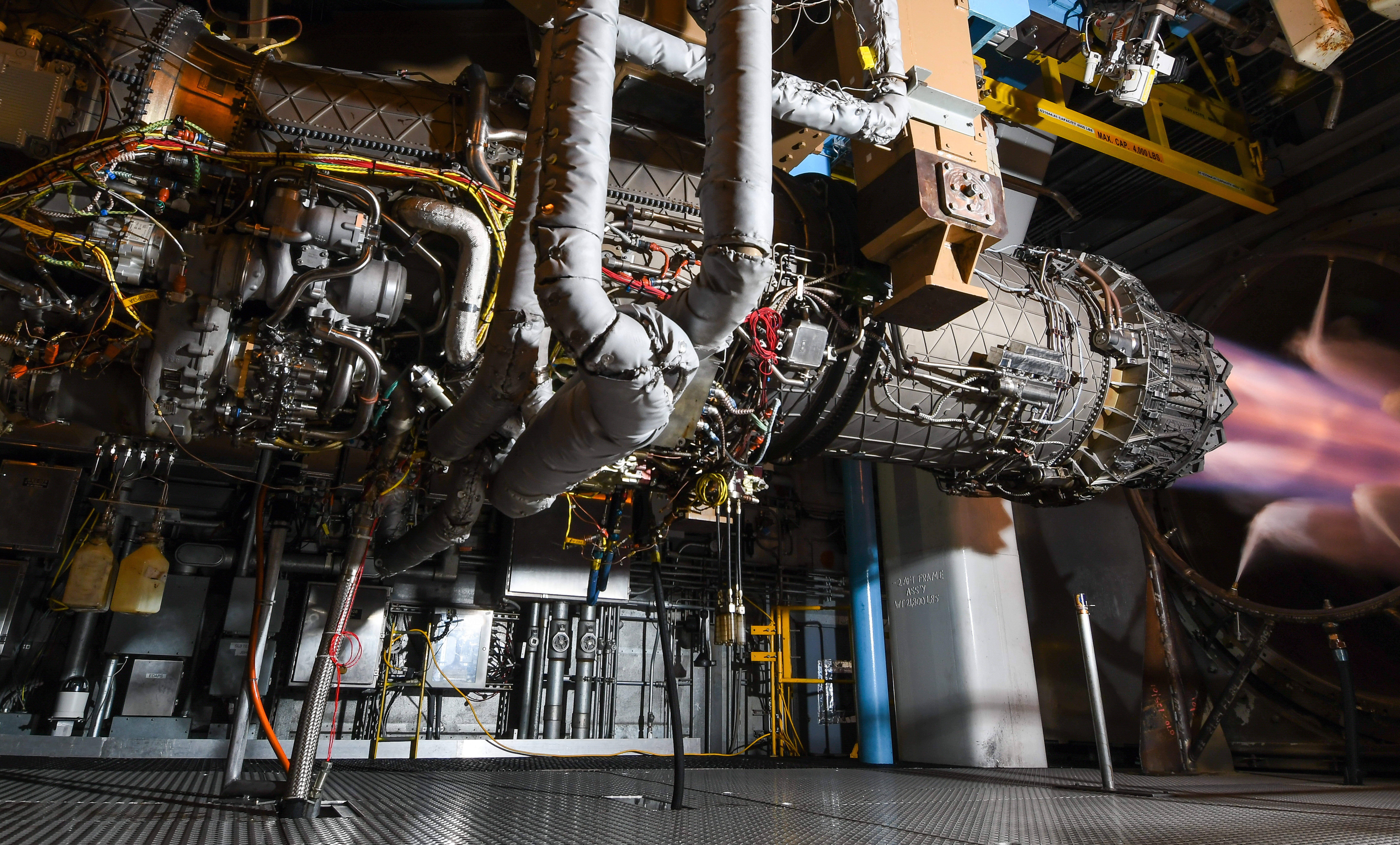Pratt & Whitney has developed a fix for its F135 engines afflicted with “harmonic resonance,” which should only take 30 minutes per affected engine to correct, company officials said. Deliveries of the engine, which powers the F-35 Lightning II stealth fighter, resumed Feb. 18 after nearly a two-month hiatus, they said.
As a result, deliveries of all-up F-35 aircraft should resume “very soon,” an industry official said. The aircraft is one of the U.S. military’s most expensive and important weapons programs.
Jennifer Latka, Pratt & Whitney’s vice president for the F135 program, told reporters that the company has developed a field fix for the “very small number” of engines affected by “harmonic resonance,” which is a vibration issue discovered in the aftermath of an F-35B crash at Lockheed Martin’s Fort Worth, Texas, facility in December. Lockheed Martin is the prime contractor for the F-35.
The fix offers an “immediate resolution” to the problem, which is already being made on production engines, and “in the field right now,” according to Latka. She declined to specify how many engines have the problem or what exactly the fix entails, but she said “for sure we are going to be retrofitting some jets.” The repair takes about half an hour and “we are not going deep into the core” of the engine to make it, said Latka.
“There are several other actions that we will be taking over time” to address the problem, she said, and referred requests for additional details to the F-35 Joint Program Office (JPO). But the immediate action allows the aircraft to operate safely and resume deliveries, Latka said.
The problem manifested after the fleet accumulated more than 600,000 hours of flying time, and it is a “systems issue” affecting “multiple parameters” rather than a problem traceable to a single part, Latka noted.
When asked for further details on the additional actions that will be required, the JPO declined to provide specifics.
“The government is currently working to provide instructions to the fleet and to Lockheed Martin to enable safe resumption of flight operations of impacted aircraft and new production aircraft,” the JPO said.
It echoed Pratt & Whitney’s statement that the harmonic resonance issue “was limited to a small number of aircraft.” The government and industry team is applying “mitigation measures that will fully address/resolve this rare phenomenon in impacted F135 engines,” according to the JPO.
Deliveries of F135 engines to Lockheed Martin’s various final assembly and checkout locations were halted Dec. 27. The Maryland-based defense giant stopped delivering F-35s in mid-December because a pending safety investigation prevented the company from conducting government-handover test flights. By last week, Lockheed Martin had completed the assembly of 21 F-35s which it has been storing until acceptance flights can resume.
But Lockheed Martin did not halt production after the accident. The harmonic resonance issue affected some engines in the aircraft assembly line as well as some in the field, but the JPO has declined to offer any numbers of affected aircraft.
Latka noted that the company hosted an industry day Feb. 28 to discuss its Engine Core Upgrade (ECU) proposal to upgrade the F135’s power and cooling needed to accommodate the Block 4 version of the fighter, which will offer significant technical enhancements.
“We have already started work on the engine core upgrade,” Latka said. “We received $200 million from Congress in FY22 and FY23, funding that brings us through preliminary design. And then in FY24, we begin detailed design.”
The first engine would begin testing by 2026 and “enter service at the end of 2028,” assuming the Air Force, the JPO, and Congress agree.
“That’s the schedule. We’re already off and running,” Latka said. She added that the ECU “pulls from previous U.S, services investments” and “technologies in this upgrade that pull from the Navy’s fuel burn reduction program that Pratt was part of in 2017-ish.” It will also use technology derived from the Adaptive Engine Transition Program (AETP) effort, in which Pratt & Whitney and GE Aerospace each developed adaptive engines that could fit in the F-35.
The Air Force has said it will make its intentions clear on AETP in the fiscal 2024 budget request, set to be sent to Congress next week. It could opt to develop a new AETP engine for its F-35s or go with the ECU. It’s not yet certain whether the Navy would help fund an AETP integration and insertion, and the Air Force may not have the funds to finance the AETP on its own. However, GE has argued that not going ahead with the AETP would hurt the engine industrial base and its ability to continue developing and producing cutting-edge powerplants. Since 2012, GE has been locked out of F-35 propulsion contracts.
Latka said Pratt and Whitney, a division of Raytheon Technologies, believes the ECU would cost $2.4 billion “over four years” while the company claims an AETP offering would cost $40 billion, although the latter figure includes Pratt and Whitney’s own estimates of secondary maintenance and non-common parts costs among the global fleet of F-35s on top of development costs.
Editor’s Note: This story was updated March 2 to clarify which comments were made by Jennifer Latka, Pratt & Whitney’s vice president for the F135 program, and after Pratt & Whitney clarified the first F135 ECU engine could begin testing by 2026.

